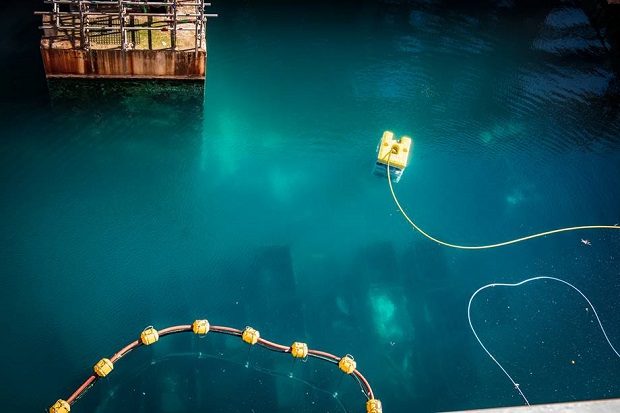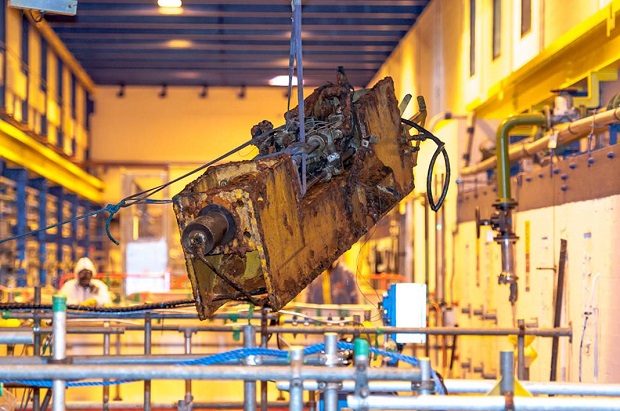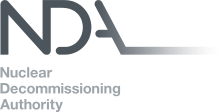Nuclear Decommissioning Authority
|
|
Turning the corner to exciting times
Blog posted by: Mark Wareing – NDA Major Projects and Programmes Manager, 7 June 2019 – Categories: Innovation/savings, Waste management.
Sellafield’s legacy ponds and silos are some of the most complex and difficult decommissioning challenges in the world, not just the UK. They date back to the 1950s and the very start of the UK nuclear industry. They may be a unique and difficult decommissioning challenge to overcome today, but these facilities played a vital role in keeping the UK's nuclear power stations operating and generating low carbon electricity for over half a century.
However, the same questions always arise the first time people see or hear about the facilities:
How did they get so bad?
Lots of reasons... But the ponds and silos weren't designed with decommissioning in mind and couldn't handle the throughput required to service the UK's Magnox reactors, particularly during the miners' strikes in the 1970s and 1980s. They were built without a roof and open to the environment, resulting in significant amounts of debris falling into the ponds and building up on the pond's floor as sludge. This seriously affects visibility and operators' ability to work and move fuel skips around. More modern facilities within Sellafield's 'Fuel Handling Plant' replaced the legacy ponds in the mid-1980s.
Why were retrieval plans not considered from the beginning?
The answer is a simple one:
Some of the country's most eminent scientists worked on the nuclear programme and did amazing things. It wasn’t that they were unaware of the problems they might be creating for future generations, but, put quite simply, it wasn't part of their mission and there was an over-optimism that technology would solve everything.
In hindsight, the reality is that many of the technologies being deployed today were available then – in one form or another.

Remotely Operated Vehicle (ROV) in First Generation Magnox Storage Pond (FGMSP)
Why does it take so long to remove the hazard?
Before work to retrieve the contents of the ponds and silos can start, a lot of work has had to be done just to improve the integrity of the buildings and infrastructure to allow the retrievals equipment to be installed.
A series of other 'down-stream' plants have to be installed before the work can commence, including waste processing plants, waste stores, waste transport packages, effluent management systems, leak detection and ventilation.
Then there’s the challenging nature of the waste, not just from a radiological perspective, but in some cases its chemically reactive nature.
Nuclear decommissioning is pioneering work, very often we're doing something for the first time and the only way to find out exactly what you’re dealing with is to get started and learn as you go along.
This means that, while there are timescales on which we are planning to complete retrievals, these are by no means certain.
People often think that once you get into production, then the rest should be predictable. This seems fairly reasonable for most manufacturing processes.
But decommissioning Sellafield isn’t a regular process and nuclear decommissioning can be a journey into the unknown. Those programmes which are successful create confidence, momentum, and provide vital learning for other decommissioning projects – helping progress the NDA's decommissioning mission more safely, faster and in a way that delivers better value for the taxpayer.
Decommissioning is as much about the attitude, professionalism, creativity and resilience of the people as it is about the physical processes.
Are we making progress?
I think we can respond to that question with a resounding yes! All the main retrievals systems are in place and both legacy ponds are in full 'production' emptying their radioactive contents.
In the case of the silos, both of these should start retrieval operations this year.
- 300 tonnes of solid waste has now been exported from the Pile Fuel Storage Pond (PFSP)
- The bulk of the fuel inventory has been exported, and the critical hazards have been removed
- Progress is being made exporting the radioactive sludge from the PFSP, and the radioactive content of the pond has been reduced by 75%
- Over 100 tonnes of fuel has been exported from the First Generation Magnox Storage Pond (FGMSP)
- Around 100m3 of sludge have been exported from the pond and areas of the pond floor are visible for the first time in 50 years.
- The first of the 400-tonne 'Silo Emptying Plants' is now installed in the Magnox Swarf Storage Silo (MSSS)
- Equipment to empty the radioactive waste in the Pile Fuel Cladding Silo (PFCS) has been installed and the doors to access the silos have been put in, ready to commence retrieval

Waste being retrieved from Pile Fuel Storage Pond (PFSP)
The containers required to store the waste are being manufactured, which have wider opportunities for managing other legacy fuel across the NDA group.
Real innovation is happening, not necessarily through new technology, but from using existing technologies in different ways and recognising that not everything in nuclear has to be bespoke to the industry.
The ROVs (remote operated vehicles) used in the ponds are a shining example of this and how they have been used with other systems to provide simple solutions to difficult problems.
The learning and expertise the NDA and its supply chain have gained from using these standard industrial machines has been significant in supporting the decommissioning work at overseas sites, including Fukushima.
Another example of pragmatic innovation is the skip size-reduction systems which combine laser-cutting with standard robotics and a dash of nuclear know-how.
Exciting things are happening and, from my perspective, it’s great to be talking about the challenges of carrying out and sustaining retrievals rather than how they are going to be done.
It won’t always be straightforward and decommissioning isn’t easy, but it’s happening. There will be a time when the ponds and silos are yet another part of the Sellafield site that’s been cleaned up for future generations.
How to get involved and learn more about work to clean up Sellafield Site
If you're interested in being involved in scrutinising our work at Sellafield, then you're welcome to join the West Cumbria Site Stakeholder Group.
The group – which includes representatives from local government, regulators, unions and community groups – meets quarterly. Its 6 working groups scrutinise detailed aspects of the Sellafield and Low Level Waste Repository sites as identified in the sites performance plans, including operational issues, environment health, emergency planning and socio-economic impacts.
Chernobyl drama sparks huge interest in nuclear, so let's talk about it
Original article link: https://nda.blog.gov.uk/2019/06/07/turning-the-corner-to-exciting-times/
|
|
||||||||||||||
.gif)



